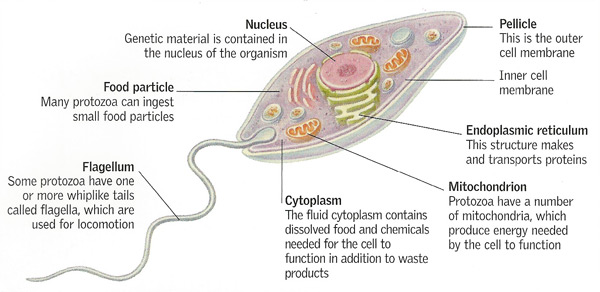Finally today I have presented about my adopted microbe which is
Borrelia burgdorferi. It is quite nervous to present in DKU, but like Dr. Wan said, that was the idea. Somehow I think it is not that scary to present in enormous hall because the audiences are my friends too (-__-) A lot of things I have learnt from doing Adopt a Microbe scrapbook until presenting the 3MT. Besides I am not only learning about my microbe only, but also being introduced with other friends' adopted microbe such as
Clostridium botulinum, Tersicoccus phoenicis and
Vibrio parahaemolyticus. Each of the microbes choosen by my friends has its own speciality. Like
Tersicoccus phoenicis is the rarest microbe where it is found in the spacecraft. I am glad that I can share about my microbe even it is a common one. But I think I have shared something that my classmates do not learn in class yet. For example how the Lyme disease can be transmitted from tick to animal, why this bacteria has high virulence factor and the antibiotics to cure the disease. For this Adopt a Microbe project I read a lot of journals especially that I search from scoop.it, this is due to every journal has different main point that they want to discuss. Thus, in order to really understand about my adopted microbe, a lot of reading is needed. I think I really enjoy doing 3MT because I get the chance to tell everyone about my adopted microbe.
In conclusion, this project has given me a lot of new experience and knowledge which I would remember and cherish it in my live. To end my last reflective journal, I would like to say million thanks to Dr. Wan and Dr. Fairol that has taught us for this semester. Although it is my first time learning from Dr. Wan and Dr. Fairol but I am really happy and grateful to learn from them.
With love,
Izzah.
 It was Monday morning that we embarked our
journey to Yakult Factory in Seremban, Negeri Sembilan. I love everything about
Japan, thus I am very excited to visit this factory since Yakult was originated
from Japan. For me, it was a bless that Minoru Shirota found Lactobacillus casei in 1930 and turn it into delicious healthy
drink. Yummy! As soon as we arrived the factory, we were led to a lecture room
to hear a lecture about Yakult. A lot of information that I gathered from the lecture. Probiotics are
good bacteria and there are some requirements to be it such as need to reach
the intestine alive, help in digestion and help in immune system. So, in Yakult
drink, it has L. casei. The word lacto means milk, bacillus is the shape of bacteria and casei is cheese. L. casei
are very special because they has high resistance to bile juice and gastric
juice means it do not get affected by acidity or alkalinity. Because of that,
they can reach our intestine alive without being interrupted. In Yakult, they
add sugar as in glucose or fructose to act as source of energy for L. casei. The bacteria will undergo
fermentation and they produce lactic acid. Consequently, lactic acid has
advantages for human such as can improve gut metabolism and decrease harmful
bacteria. In conclusion, L. casei
gives us great advantage as in they show the video about a kid that has short
intestine problem where his intestine is cut into 60cm and experience diarrhea
about 12 times a day. But when he drinks Yakult, his diarrhea is decreased to
four times only.
It was Monday morning that we embarked our
journey to Yakult Factory in Seremban, Negeri Sembilan. I love everything about
Japan, thus I am very excited to visit this factory since Yakult was originated
from Japan. For me, it was a bless that Minoru Shirota found Lactobacillus casei in 1930 and turn it into delicious healthy
drink. Yummy! As soon as we arrived the factory, we were led to a lecture room
to hear a lecture about Yakult. A lot of information that I gathered from the lecture. Probiotics are
good bacteria and there are some requirements to be it such as need to reach
the intestine alive, help in digestion and help in immune system. So, in Yakult
drink, it has L. casei. The word lacto means milk, bacillus is the shape of bacteria and casei is cheese. L. casei
are very special because they has high resistance to bile juice and gastric
juice means it do not get affected by acidity or alkalinity. Because of that,
they can reach our intestine alive without being interrupted. In Yakult, they
add sugar as in glucose or fructose to act as source of energy for L. casei. The bacteria will undergo
fermentation and they produce lactic acid. Consequently, lactic acid has
advantages for human such as can improve gut metabolism and decrease harmful
bacteria. In conclusion, L. casei
gives us great advantage as in they show the video about a kid that has short
intestine problem where his intestine is cut into 60cm and experience diarrhea
about 12 times a day. But when he drinks Yakult, his diarrhea is decreased to
four times only. 



 Assalamualaikum warahmatullahi wabarakatuh
Assalamualaikum warahmatullahi wabarakatuh


 So today, I am going to continue my entry from last week about Prokaryotic and Eukaryotic Cells.
So today, I am going to continue my entry from last week about Prokaryotic and Eukaryotic Cells.
